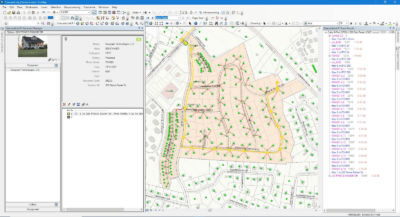In today’s landscape, service providers are expected to have adaptable, reliable, and scalable networks to meet increasingly diverse needs across a variety of markets. Therefore, planning an FTTx network requires thinking strategically about current and future demands as well as conditions at the network location. Based on our experience as network planners and engineers, we outline four things to consider when planning your fiber network. These key factors will help you reduce costs and increase ROI.
Plan for Overall Future Growth, Not a Specific Need
During a planning phase, the temptation is often to prepare for an immediate need. Yet there are many benefits to approaching network planning strategically from a business perspective. For example, let’s say you plan to deploy an FTTH network in a residential neighborhood. Questions to ask during your initial planning include: Are there going to be other residential subdivisions built nearby? What type(s) of buildings will there be – single- or multi-dwelling units? Will there be any small- or medium-sized businesses close to the selected network locations?
Paying attention to the overall plan is the key to saving money as you build. It allows you to maximize your ROI as well as to have a better understanding of which technologies to choose (active Ethernet, GPON, XGPON, TWDM-PON, etc.) in order to future-proof your network.
Consider the Density of Your Location
Whether you’re planning networks in rural or urban areas, you’ll want to examine your location’s density. This will dictate your optimal network architecture and design rules. For instance, say you have a multi-dwelling unit with 8 apartments. It may not be feasible to run 8 separate runs to this unit. You might consider moving your electronics to a more central location within the unit, allowing you to use smaller-count fiber back to your wire centers.
Taking density and future growth into account early in the planning stage allows you to design your mainline cable for 100% serviceability. This will simplify your network operation and maintenance. In addition, it will facilitate your network expansion to meet the needs of the location.
Are There Non-Compete or Exclusivity Agreements?
Exclusivity rights and non-compete agreements affect the percentage of drops you install during the initial build. A 100% build plan makes sense when a pre-planned neighborhood or development has a non-competitive environment. The developers make an agreement with the service providers not to give access to competitors for a certain period of time. As a result, pre-planned neighborhoods are often designed as a 100% build, with all the drops installed. When the construction of buildings is completed, it’s just a matter of plugging them into the network.
How Much Construction Access Will You Have?
Construction access is important for making decisions about network design as well as for deployment and maintenance. You always plan for how much access you have back to your network.
- If access is limited, you want to be one and done – build 100% while you are at it. This makes more sense for urban areas with limited access to private rideways or alleys.
- If you have unrestricted access to your network without disrupting your customers or the public, then your network build can be done at different times.
Planning a new FTTx network is not easy. It involves developing a solid business plan, balancing capital expenses with operating costs while ensuring revenue generation. In addition, you want network infrastructure to be agile enough to scale and adapt to the changing demands of users and emerging technology. Taking into account the outlined key considerations – such as future growth, location density, agreements, and access – will help you in developing your solid plan. This will translate into major savings in the building and operation of your FTTx network.
And if you need a partner on your journey, our experts at GEOGRAPH have experience and expertise to provide guidance. In addition, our Project Planner, a part of CrescentLink Desktop, allows you to track your work order through every stage of the design with ease, all within the GIS environment.
To learn more about how to plan FTTx,




